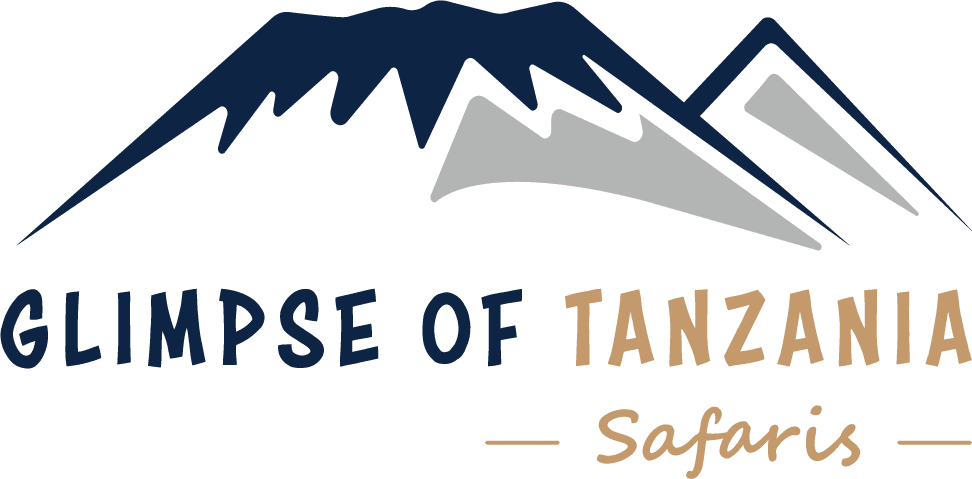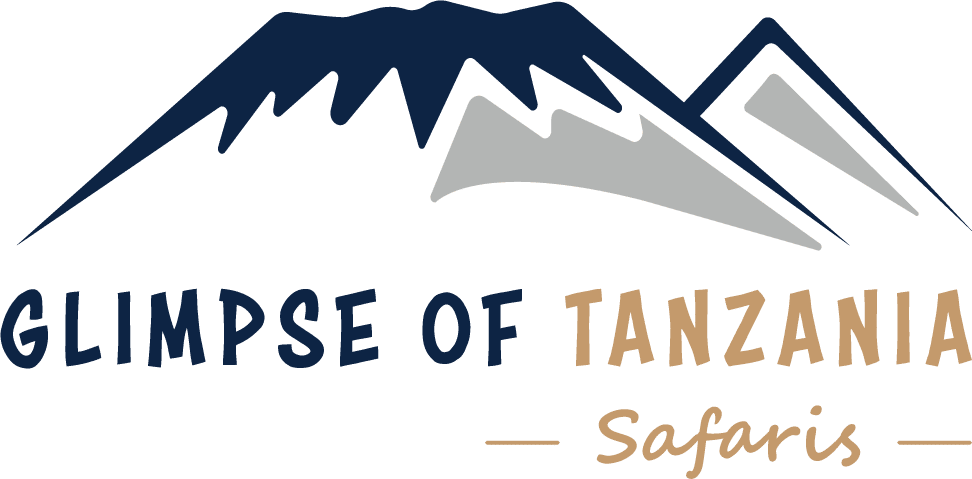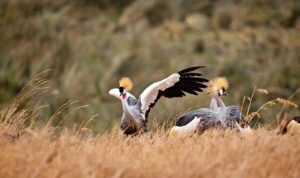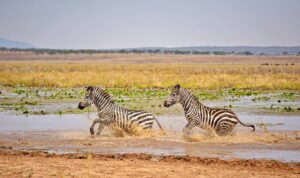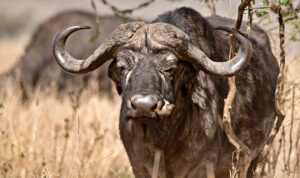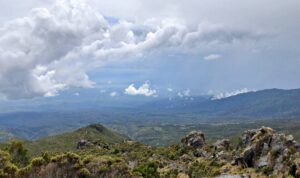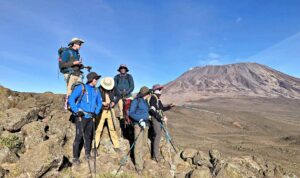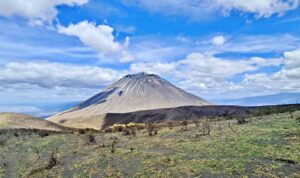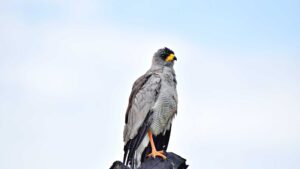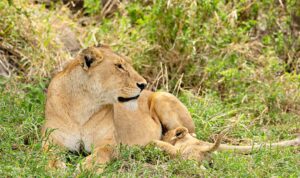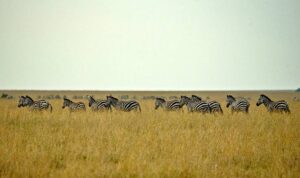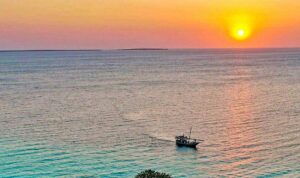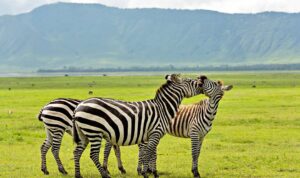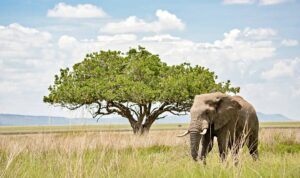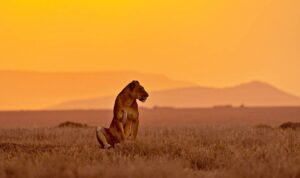APERÇU
Une merveille vivante du monde. La destination la plus recherchée et, en fait, celle que vous ne devriez pas manquer de gravir. La plupart des gens se demanderont pourquoi le Kilimandjaro est la plus grande destination alors qu'il n'est pas le plus haut du monde. Naissant le long de l'équateur, personne ne s'attend à ce qu'il soit couvert de neige et, alors que beaucoup sont habitués à des chaînes de montagnes, le Kilimandjaro est un pic isolé à une altitude de 5895 m au-dessus du niveau de la mer.
CARACTÉRISTIQUES UNIQUES
LIBERTÉ DE VOLET
Ce qui signifie qu'il ne fait pas partie d'une chaîne de montagnes comme (le Mont Everest et l'Himalaya). La neige est présente là où on l'attend le moins, c'est-à-dire sur le toit du puissant mont Kilimandjaro. Le Mont Kilimandjaro est également très célèbre dans le monde puisqu'il s'agit de la plus haute montagne du continent africain, ce qui en fait l'un des 7 sommets du monde.
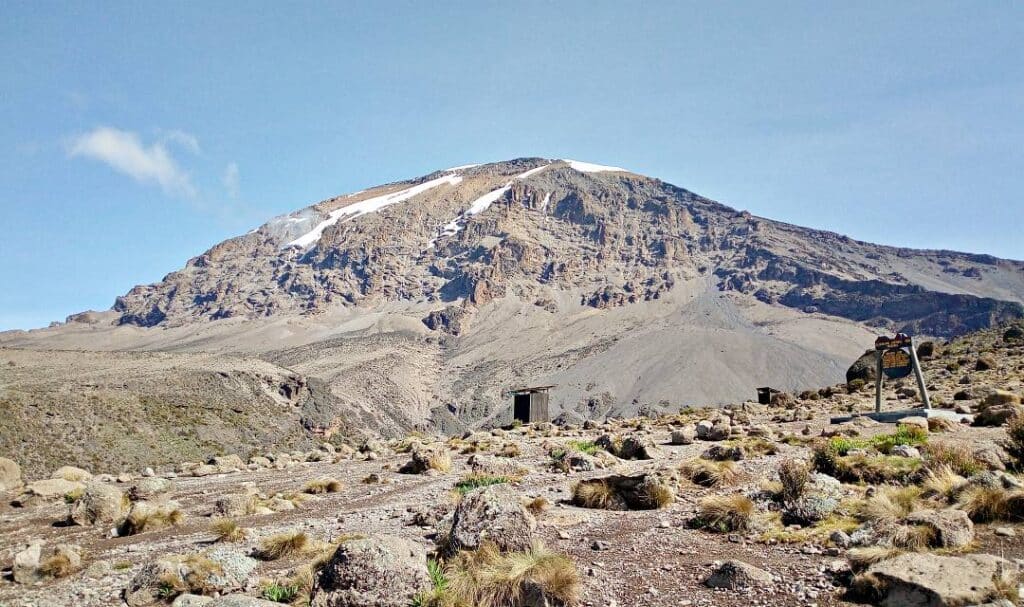
EMPLACEMENT
Cette célèbre montagne est située dans la partie nord de la Tanzanie, juste à la frontière du Kenya et de la Tanzanie, dans la région du Kilimandjaro. C'est également un stratovolcan (terme désignant un très grand volcan composé de cendres, de lave et de roche). Le Kilimandjaro se compose de trois pics : Kibo, Mawenzi et Shira. Le Kibo est le sommet de la montagne et la plus haute des trois formations volcaniques. Alors que le Mawenzi et le Shira sont éteints, le Kibo est en sommeil. Le point le plus élevé sur le bord du cratère du Kibo s'appelle Uhuru, le mot swahili pour "liberté".
ROUTES DU KILIMANDJARO
Il y a six itinéraires principaux sur le Mont Kilimandjaro, chacun est bien entretenu, et chaque itinéraire a des avantages et des inconvénients différents, (Route Lemosho, Route Shira, Route Machame, Route Umbwe, Route Marangu, et la route Rongai). Il est obligatoire d'avoir un guide pour la randonnée sur le Mont Kilimandjaro, et il ne manque pas d'opérateurs de guides qui peuvent vous emmener au sommet, le temps sur le Mont Kilimandjaro varie largement en fonction de l'altitude et de la saison ; il peut faire extrêmement froid près du sommet, donc chaud, et il peut aussi y avoir des vents violents (montagne imprévisible), donc des vêtements chauds sont nécessaires, de fortes pluies sont également possibles à tout moment, donc des vêtements de pluie de qualité sont obligatoires.
ROUTE DE LEMOSHO

La route Lemosho est l'une des pistes les plus pittoresques du Kilimandjaro, cette route est vraiment bonne pour ceux qui veulent avoir plus de temps pour explorer la montagne et profiter d'une vue incroyable sur le pic Shira, le plus ancien pic du Kilimandjaro. La route est la troisième route la plus difficile après Umbwe et Machame, un étalage de splendeurs panoramiques sur presque tous les côtés de la montagne.
L'itinéraire aborde le Mont Kilimandjaro par l'ouest, en commençant par un long trajet en voiture depuis Moshi ou Arusha jusqu'à Londorossi Gate. Les deux premiers jours sont consacrés à un trekking dans la forêt tropicale jusqu'à la crête de Shira. L'itinéraire Lemosho traverse tout le plateau de Shira d'ouest en est en une randonnée agréable et relativement plate. L'itinéraire passe sous le champ de glace sud du Kilimandjaro sur un chemin connu sous le nom de Southern Circuit avant d'atteindre le sommet à Barafu. La descente se fait par la route Mweka.
ROUTE DE LA MACHAME
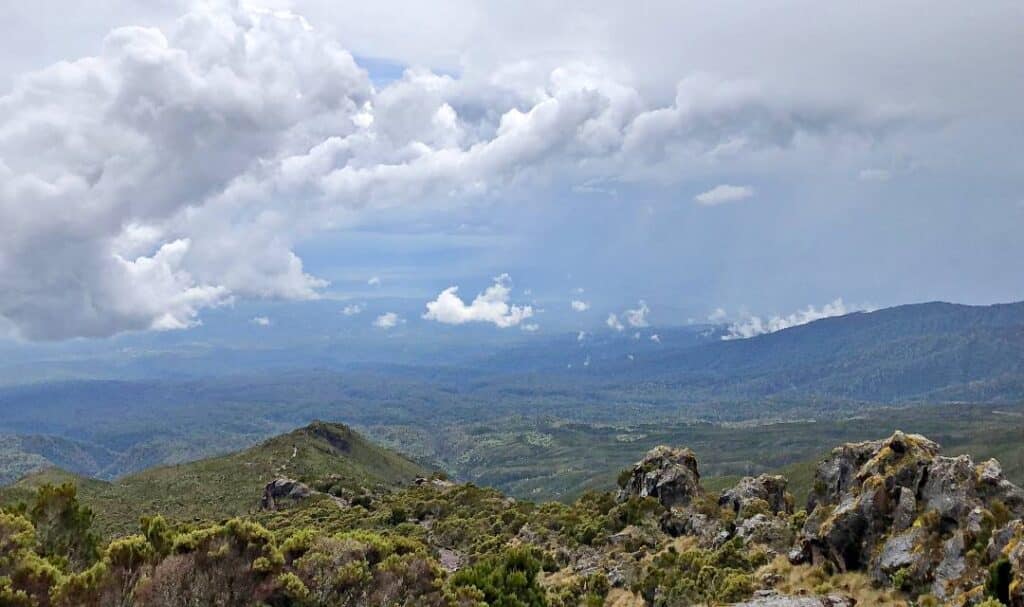
La route Machame, également connue sous le nom de route "Whiskey", est un itinéraire très populaire sur le Kilimandjaro. Machame offre un paysage d'une grande beauté. Bien qu'il soit considéré comme difficile, escarpé et exigeant, en particulier en raison de son programme plus court, cet itinéraire convient mieux aux personnes plus aventureuses. Par conséquent, cet itinéraire convient mieux aux personnes plus aventureuses ou à celles qui ont une certaine expérience de la haute altitude, de la randonnée ou du sac à dos.
Il aborde le Mont Kilimandjaro par le sud, en commençant par un court trajet en voiture de Moshi à Machame Gate. Le chemin conduit les randonneurs à travers la forêt tropicale jusqu'au plateau de Shira. Ici, de nombreuses voies du Kilimandjaro convergent. Ensuite, l'itinéraire tourne vers l'est et passe sous le champ de glace sud du Kilimandjaro sur un chemin connu sous le nom de Southern Circuit avant d'atteindre le sommet à Barafu. La descente se fait par la route Mweka.
ROUTE DE MARANGU
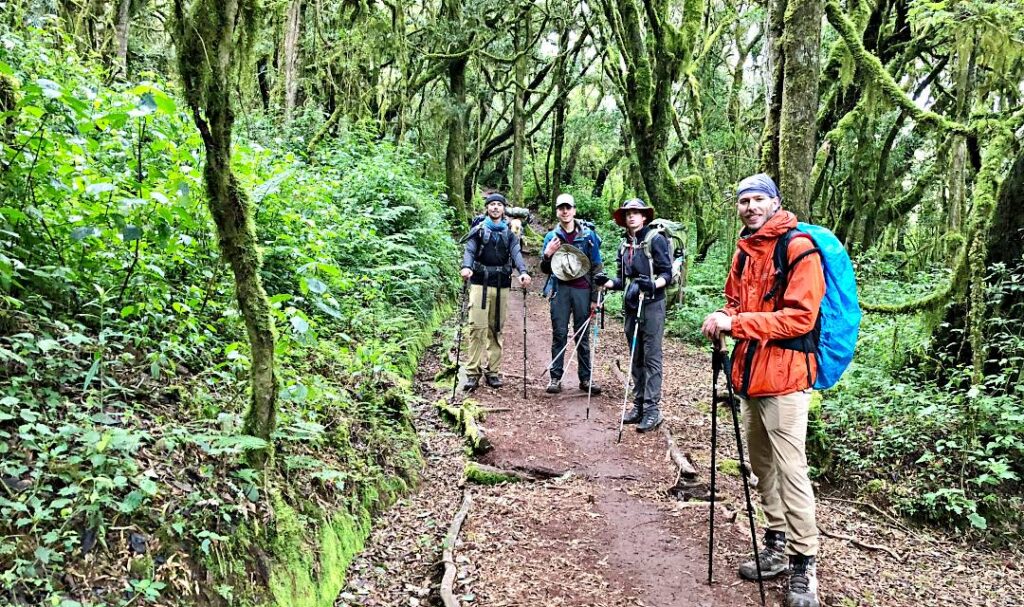
Surnommée la route "Coca-Cola", la route Marangu est un trek classique sur le Mont Kilimandjaro. Elle est considérée comme l'itinéraire le plus ancien et le mieux établi. Beaucoup préfèrent la route Marangu car elle est considérée comme le chemin le plus facile de la montagne, étant donné sa pente navigable. C'est également le seul itinéraire qui offre des cabanes de couchage dans des hébergements de type dortoir.
Le nombre minimum de jours requis pour cet itinéraire est de cinq, bien que la probabilité de réussir à atteindre le sommet dans ce laps de temps soit assez faible. Il est fortement recommandé de consacrer une journée supplémentaire d'acclimatation à l'ascension du Kilimandjaro par la voie Marangu.
Cependant, malgré sa popularité, elle attire beaucoup de monde. De tous les itinéraires, c'est celui qui offre le moins de variété de paysages, car la montée et la descente se font sur le même chemin, et c'est pour cette raison qu'il est le plus fréquenté. La Marangu n'est privilégiée que pendant la saison des pluies, où l'on préfère les refuges aux terrains humides.
FAUNE SAUVAGE AU KILIMANJARO
La montagne et ses environs offrent un habitat à un large éventail d'animaux sauvages comme les antilopes, les éléphants, les buffles, les élans, les singes et les oiseaux. Ces animaux peuvent être facilement repérés sur les points d'élévation inférieurs car certains sont également en transit.
VÉGÉTATION AU KILIMANJARO
La végétation commune à laquelle on peut s'attendre sur le Mont Kilimandjaro comprend les arbres suivants : chamfer, Senecio sauvage, fougère, sycomore et genévrier, ainsi que la mousse (barbe de vieil homme).
Le Mont Kilimandjaro compte 5 zones climatiques différentes.;
- zone cultivée
- lande et landes
- désert alpin
- zones de sommet arctique
- forêt montagnarde
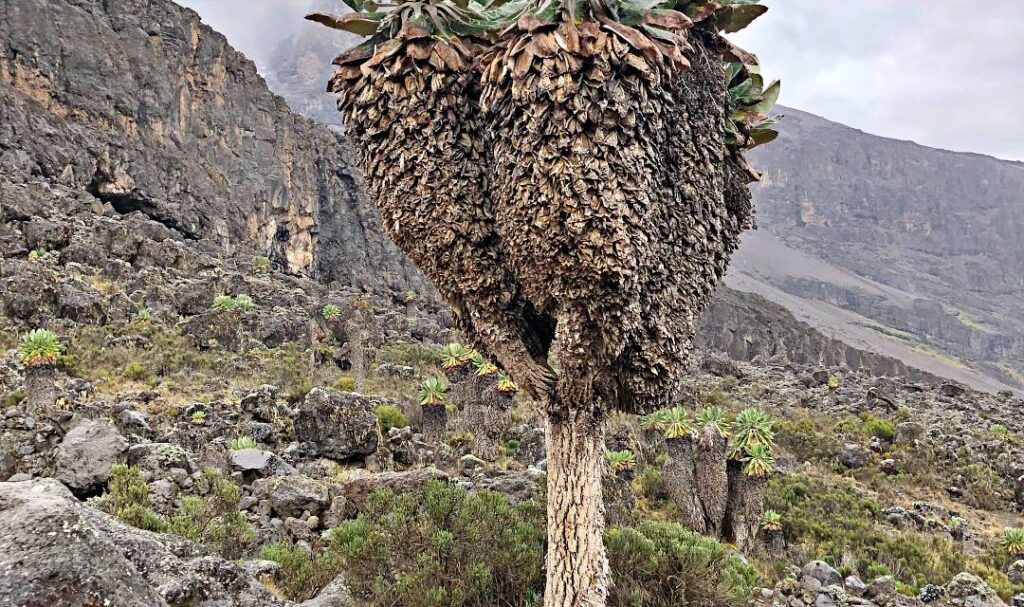
La zone de forêt montagnarde est une zone humide et un sol riche. La zone est l'endroit parfait pour la multitude de plantes dont certaines sont endémiques comme impatiens kilimanjarica
MEILLEUR MOMENT POUR ESCALADER LE KILIMANJARO
Le temps sur le Mont Kilimandjaro est imprévisible. Il y a deux meilleures saisons pour faire l'ascension du Kilimandjaro ; Janvier ? mars, et Juin ? octobre.
De janvier à mars, est plus froid que de juin à octobre et la probabilité d'apercevoir de la neige au sommet est plus élevée ; les pistes sont souvent plus calmes à cette période de l'année.
Juin - Octobre est une autre bonne période car c'est la saison sèche. À cette époque de l'année, le ciel est bleu, ce qui permet d'avoir une vue claire de la montagne et de voir facilement les étoiles la nuit.
Cependant, le Kilimandjaro peut être escaladé presque toute l'année. Par exemple, en Décembre De nombreuses personnes envisagent de passer des vacances à la montagne et celles-ci peuvent être organisées pour vous.
Avril, mai, et novembre n'est pas une période propice à l'escalade en raison des fortes pluies, mais les amateurs de montagne peuvent tout de même faire de la randonnée.
